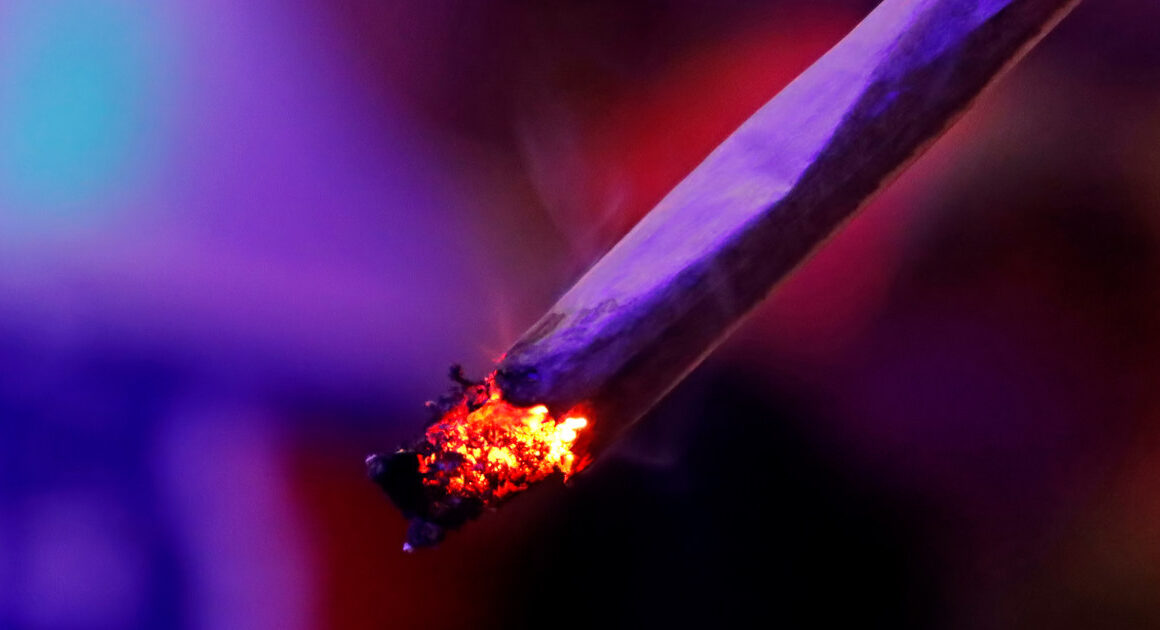Regular heavy marijuana use may increase a person’s risk of developing some head and neck cancers, a study published Thursday in JAMA Otolaryngology-Head & Neck Surgery found.
The study found that heavy cannabis users were between 3.5 and 5 times more likely to develop head and neck cancers than those who didn’t use the drug regularly.
Head and neck cancers are cancers of the mouth, throat and nasal cavity and are twice as common in men than in women, according to the Centers for Disease Control and Prevention.
The research adds to a somewhat muddy body of evidence that’s just beginning to explore the impact cannabis may have on cancer risk.
“The cannabinoids themselves could be carcinogenic, and it could also be that the smoke itself has potential for carcinogenesis,” said lead study author Dr. Niels Kokot, a head and neck surgeon at Keck Medicine of the University of Southern California.
Kokot and his team used 20 years of data from a global database called TriNetX, which included patient information from 64 health centers throughout the United States. Of the more than 4 million people included, about 116,000 had been diagnosed with cannabis use disorder between April 2004 and April 2024. The diagnoses were based on self-reported use of the drug — in other words, the patient had to tell a health care provider how often they used cannabis and how it affected them.
The researchers compared people with cannabis use disorder to those of a similar age and sex in the study without cannabis use disorder. The majority of the people with cannabis use disorder in the study were white. None had a history of head and neck cancer before the study began.
The cannabis users in the study were more likely to develop all types of head and neck cancer except hypopharyngeal cancer, a type of lower throat cancer, compared with nonusers. The most common types of head and neck cancer in both groups were oral cancers and cancer of the larynx.
The study authors noted there were several limitations that could skew the study’s findings. The first is that it’s very difficult to measure how many people regularly use cannabis when relying on self-reported data.
To be in this group, people would have had to tell a health care provider during a visit that they used cannabis very frequently — the equivalent of smoking about a joint per day, said Dr. Joseph Califano, director of the Gleiberman Head and Neck Cancer Center at the Moores Cancer Center at the University of California, San Diego, who was not involved with the research.
The same is true for alcohol and tobacco use.
“The tough thing about this study and almost every study that looks at cannabis use is that we just don’t have the data,” said Califano, who wrote an editorial that was published alongside the new study.
The study also looked at head and neck cancer diagnoses at two points in time: within the first year of being diagnosed with cannabis use disorder and five years or beyond the diagnosis. It excluded, however, cancers found between one and four years after a cannabis use disorder diagnosis. This secondary analysis was used to determine how strong the association was: If it remained after five years, it’s more likely the association was strong.
They found that after five or more years, the cannabis use disorder group still had higher overall rates of head and neck cancer, but there was no longer a significantly increased risk for some specific types, including oral, laryngeal and oropharyngeal cancer.
“You would expect that over time, there would be an accumulative effect,” said Dr. Glenn Hanna, a medical oncologist at the Dana-Farber Cancer Institute’s Center for Head and Neck Oncology.
It’s still unclear what role dose, frequency and how a person ingests cannabis may affect their cancer risk. Califano noted that the new research links the increased risk to self-reported heavy users of cannabis, not occasional users.
Past studies that have investigated whether cannabis use increases a person’s risk for head and neck cancer have yielded mixed results. The new study highlights the need for continued research on the subject, especially as daily marijuana use grows in popularity, Hanna said.
Despite the study’s limitations, “it still suggests there could be some association,” he said.
Cannabis and cancer risk
The cannabis plant contains more than 100 cannabinoids, including THC and CBD, and hundreds of non-cannabinoid chemicals. Scientists are just beginning to understand the effect these compounds have on the human body, both good and bad.
“Cannabinoids are powerful drugs that exert their effects at concentrations found with recreational use. We know that because you get high,” Califano said, noting that it’s almost unheard of to find a truly pure form of a single cannabinoid, such as CBD.
Hanna said that smoking anything, including cannabis, activates inflammatory pathways that could be involved in cancer formation. Cannabinoids could also become carcinogenic in the body.
“There are biological reasons why someone would hypothesize that cannabis smoke could be harmful, but we’re not sure what the degree of increased risk is, if there is one, with head and neck cancer,” he said, noting that it’s difficult to tease out other risk factors, such as alcohol and tobacco use. About 20% of the people in the study with cannabis use disorder reported frequent tobacco and alcohol use, compared with about 2% in the group without cannabis use disorder.
Keeping this in mind, edible cannabis may be safer than smoking the plant, Hanna said, acknowledging some of his patients use medical marijuana for health conditions.
But Califano said there’s reason to suspect some cannabinoids themselves — rather than the smoke — might be behind the increased cancer risk, if future research establishes a clear connection.
“Cannabinoids have a lot of effects that drive immune response and all these other things that are involved with either how cancer develops or how our bodies fight cancer,” he said. “So it’s not unreasonable to think about the cancer-associated effects of cannabis use to be independent of whether or not you ingest smoke or vape or bake them into your brownies.”
Hanna and Califano acknowledge that cannabis likely has both positive and negative effects on health. As research uncovers more about the impact cannabis has on the body, it’s likely that different cannabinoids will be found to have different effects on cancer risk.
“Some of them may be associated with cancer development, some may actually inhibit cancer development,” Califano said.
,








